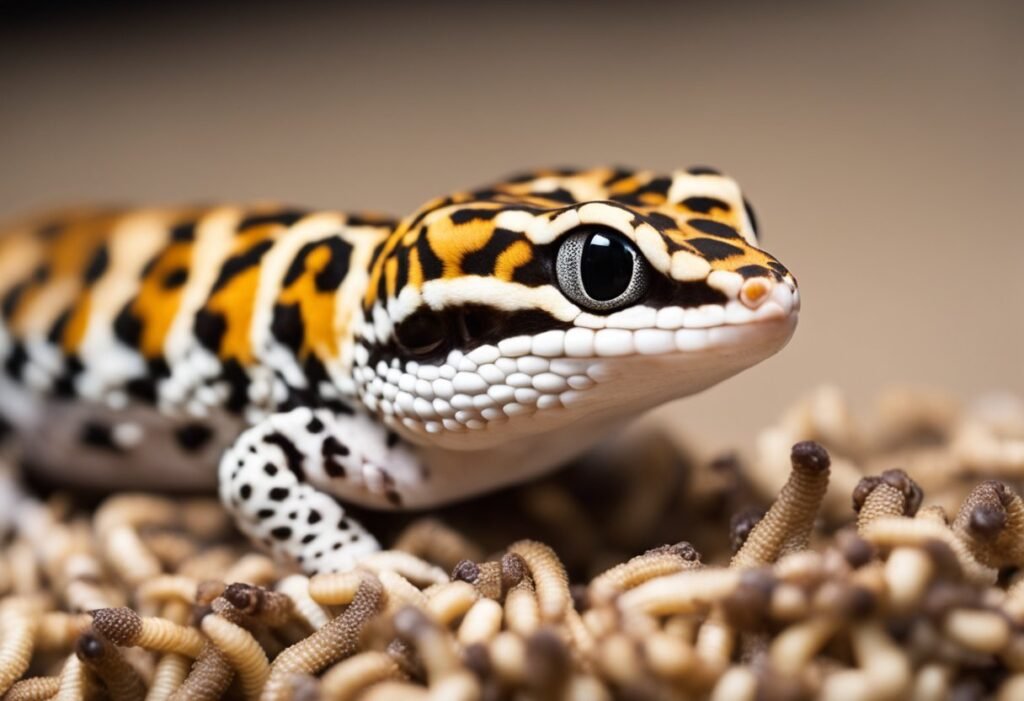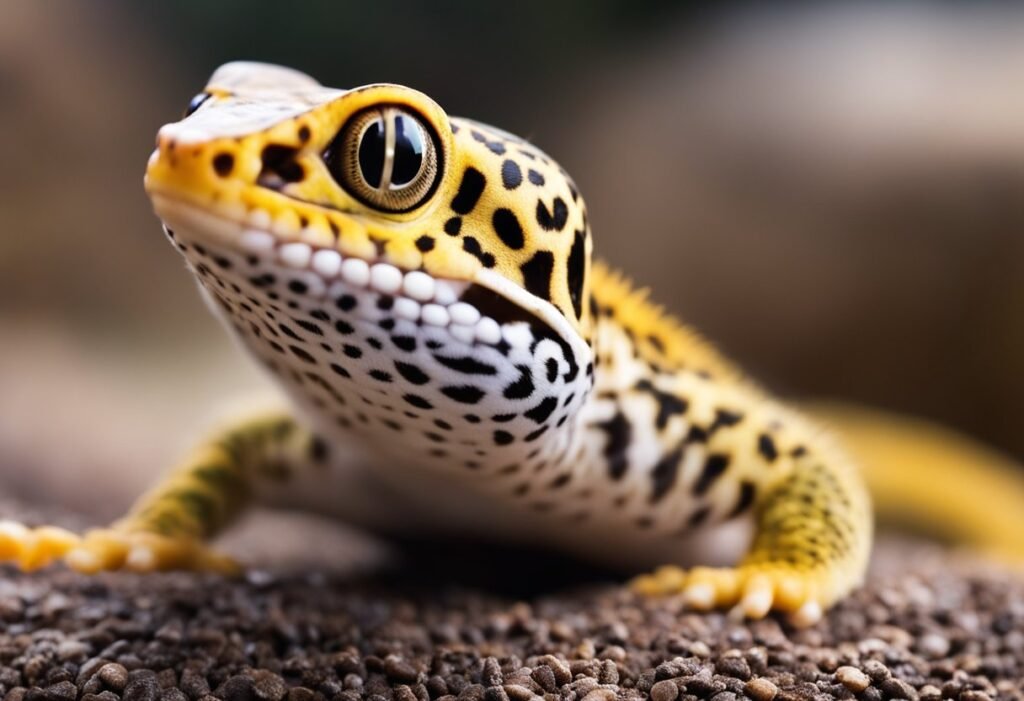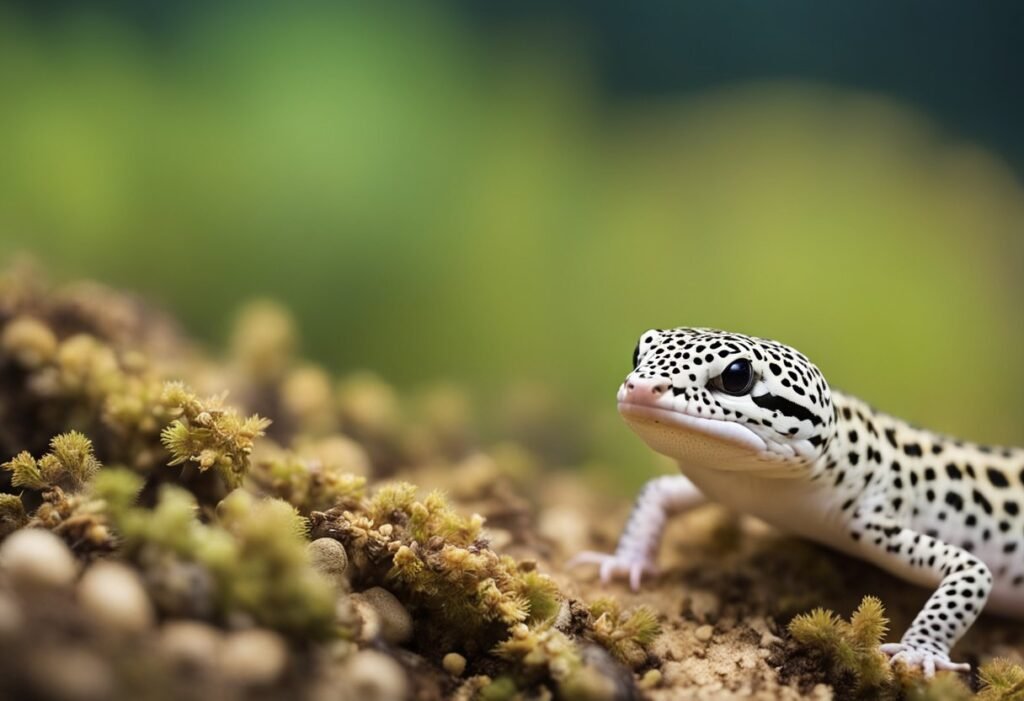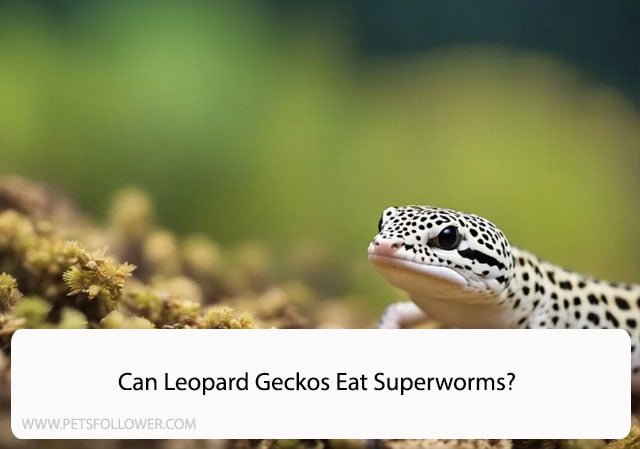Leopard geckos are popular pets among reptile enthusiasts due to their unique appearance and docile nature. As with any pet, it’s important to provide them with a balanced and nutritious diet. Superworms are a common feeder insect that many leopard gecko owners consider adding to their pet’s diet. In this article, we will explore the question: can leopard geckos eat superworms?
Superworms are the larvae of the darkling beetle and are a popular feeder insect for many reptiles. They are high in protein and fat, making them a nutritious addition to a leopard gecko’s diet. However, it’s important to consider the size and age of your leopard gecko before feeding them superworms, as they can be quite large and difficult to digest for younger or smaller geckos. In the following paragraphs, we will discuss the pros and cons of feeding superworms to leopard geckos and provide some tips for incorporating them into your pet’s diet.
Nutritional Profile of Superworms

Superworms are a popular feeder insect for reptiles, including leopard geckos. They are high in protein and fat, making them a good choice for a varied diet. Here is a breakdown of their nutritional profile:
Protein
Superworms are an excellent source of protein for leopard geckos. They contain around 20% protein by weight, which is higher than most other feeder insects. Protein is essential for growth and repair of tissues in the body, and a diet lacking in protein can lead to stunted growth and other health problems.
Fat
Superworms are also high in fat, with around 17% fat by weight. While some fat is necessary for a healthy diet, too much can lead to obesity and other health problems. It is important to feed superworms in moderation and not as a staple food.
Calcium
Superworms are not a good source of calcium, which is an essential nutrient for leopard geckos. A diet lacking in calcium can lead to metabolic bone disease, a serious condition that can cause deformities and even death. It is important to dust superworms with a calcium supplement before feeding them to your leopard gecko.
Other Nutrients
Superworms also contain other nutrients, including phosphorus, potassium, and magnesium. However, they are not a good source of vitamins, and should not be relied upon as a sole food source for leopard geckos.
In conclusion, superworms are a good source of protein and fat for leopard geckos, but should be fed in moderation and dusted with calcium supplement to ensure a balanced diet.
Benefits of Superworms in a Leopard Gecko’s Diet

When it comes to feeding leopard geckos, it is important to provide them with a varied diet that meets their nutritional needs. Superworms are a popular choice among leopard gecko owners due to their high protein content, low fat content, and favorable calcium to phosphorus ratio.
Protein Content
Protein is essential for the growth and maintenance of leopard geckos. Superworms are a great source of protein, containing approximately 20% protein by weight. This makes them an excellent addition to a leopard gecko’s diet, especially for growing juveniles and breeding adults.
Fat Content
While fat is an important part of a leopard gecko’s diet, it is important to avoid overfeeding high-fat foods. Superworms have a relatively low fat content, with only 13% fat by weight. This makes them a great choice for leopard geckos that need to maintain a healthy body weight.
Calcium to Phosphorus Ratio
Leopard geckos require a diet that is high in calcium and low in phosphorus to maintain strong bones and prevent metabolic bone disease. Superworms have a favorable calcium to phosphorus ratio, with approximately 1:9 calcium to phosphorus. This makes them a great addition to a balanced leopard gecko diet.
Overall, superworms are a great addition to a leopard gecko’s diet due to their high protein content, low fat content, and favorable calcium to phosphorus ratio. However, it is important to feed them in moderation and provide a varied diet to ensure that all of their nutritional needs are met.
Risks of Feeding Superworms to Leopard Geckos
When it comes to feeding leopard geckos, it’s important to consider the potential risks associated with different food sources. Superworms are a popular choice among many gecko owners, but there are some risks to keep in mind.
Impaction Risk
One of the biggest concerns with feeding superworms to leopard geckos is the risk of impaction. Superworms have a tough exoskeleton that can be difficult for geckos to digest, especially if they are fed in large quantities or are too big for the gecko to handle. This can lead to blockages in the digestive tract, which can be life-threatening if not treated promptly.
To minimize the risk of impaction, it’s important to feed appropriately sized superworms and to avoid overfeeding. We recommend feeding superworms that are no larger than the width of your gecko’s head.
Chitin Content
Another potential issue with feeding superworms to leopard geckos is their high chitin content. Chitin is a tough, fibrous material that makes up the exoskeleton of insects. While geckos are able to digest some chitin, too much can be difficult for them to process and can lead to digestive issues.
To reduce the chitin content of superworms, we recommend gut-loading them with a nutritious diet before feeding them to your gecko. This will help to ensure that your gecko is getting the most nutritional benefit from the superworms while minimizing the amount of chitin they need to digest.
Appropriate Sizing
Finally, it’s important to ensure that the superworms you feed to your leopard gecko are an appropriate size. Superworms that are too large can be difficult for geckos to handle and can pose a choking hazard. On the other hand, superworms that are too small may not provide enough nutrition for your gecko.
We recommend feeding superworms that are no larger than the width of your gecko’s head and no smaller than the distance between their eyes. This will help to ensure that your gecko is getting the right amount of nutrition without posing a risk to their health.
Feeding Guidelines for Leopard Geckos

Leopard geckos are insectivores, and they require a diet that is high in protein. One of the live prey options that are commonly fed to leopard geckos are superworms. However, it is important to follow certain feeding guidelines to ensure the health and well-being of your pet.
Frequency of Feeding
Adult leopard geckos should be fed every two to three days, while juvenile leopard geckos should be fed daily. It is important to avoid overfeeding your leopard gecko, as this can lead to obesity and other health issues.
Quantity of Superworms
The quantity of superworms that you should feed your leopard gecko depends on its size and age. As a general rule, you should feed your leopard gecko as many superworms as it can eat in 10 to 15 minutes. For adult leopard geckos, this is typically around 5 to 7 superworms per feeding. For juvenile leopard geckos, this can be anywhere from 3 to 5 superworms per feeding.
Live Prey Feeding Tips
When feeding superworms to your leopard gecko, it is important to ensure that the superworms are gut-loaded. This means that the superworms are fed a nutritious diet before being fed to your leopard gecko. You can gut-load superworms by feeding them a diet of fruits and vegetables, such as carrots and apples.
It is also important to dust the superworms with a calcium supplement before feeding them to your leopard gecko. This will help to prevent calcium deficiency, which is a common health issue in leopard geckos.
In conclusion, superworms can be a nutritious and tasty addition to your leopard gecko’s diet. By following these feeding guidelines, you can ensure that your pet stays healthy and happy.
Preparing Superworms for Consumption
When feeding leopard geckos, it is important to ensure that their food is properly prepared to avoid any potential health issues. Here are some steps to follow when preparing superworms for consumption:
- Purchase healthy and lively superworms from a reputable source.
- Keep the superworms in a well-ventilated container with a lid and provide them with a source of moisture, such as sliced carrots or potato.
- Before feeding the superworms to your leopard gecko, gut load them with a nutritious food source such as commercial cricket food, fruits, or vegetables. This will ensure that your gecko receives proper nutrition from the superworms.
- Dust the superworms with a calcium supplement powder before feeding them to your leopard gecko. This will help prevent calcium deficiencies in your gecko.
- Only feed your leopard gecko as many superworms as they can eat in one feeding, as uneaten superworms can burrow into the substrate and potentially harm your gecko.
By following these steps, you can ensure that your leopard gecko receives a healthy and nutritious meal.
Frequently Asked Questions
- Can leopard geckos eat superworms as a primary diet?
- Superworms can be part of a varied diet but shouldn’t be the sole food source.
- How many superworms should I feed my leopard gecko?
- Feed appropriate-sized superworms, usually 2-3 for juveniles and 4-6 for adults, a few times a week.
- Are there any risks associated with feeding superworms?
- Risk of impaction exists; ensure superworms are of appropriate size and gut-loaded.
- Can I give my leopard gecko only live superworms?
- While live is preferred, occasional feeding of pre-killed or dried superworms is acceptable.
- How should I gut-load superworms for optimal nutrition?
- Feed them nutrient-rich foods like vegetables, fruits, and commercial gut-loading diets.
- Can superworms be part of a breeding leopard gecko’s diet?
- Yes, but monitor intake, and ensure a well-rounded diet for breeding females for optimal health.





